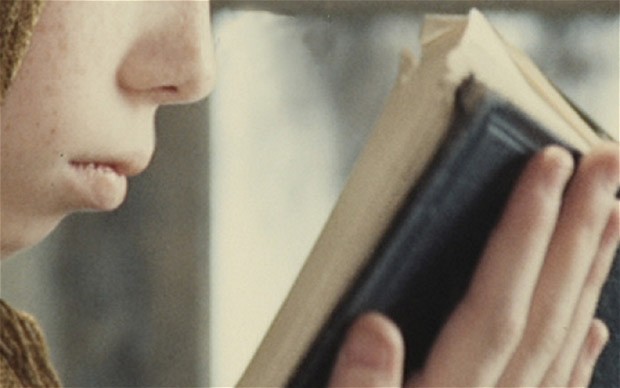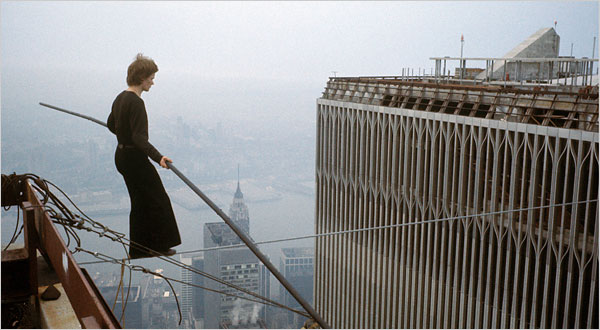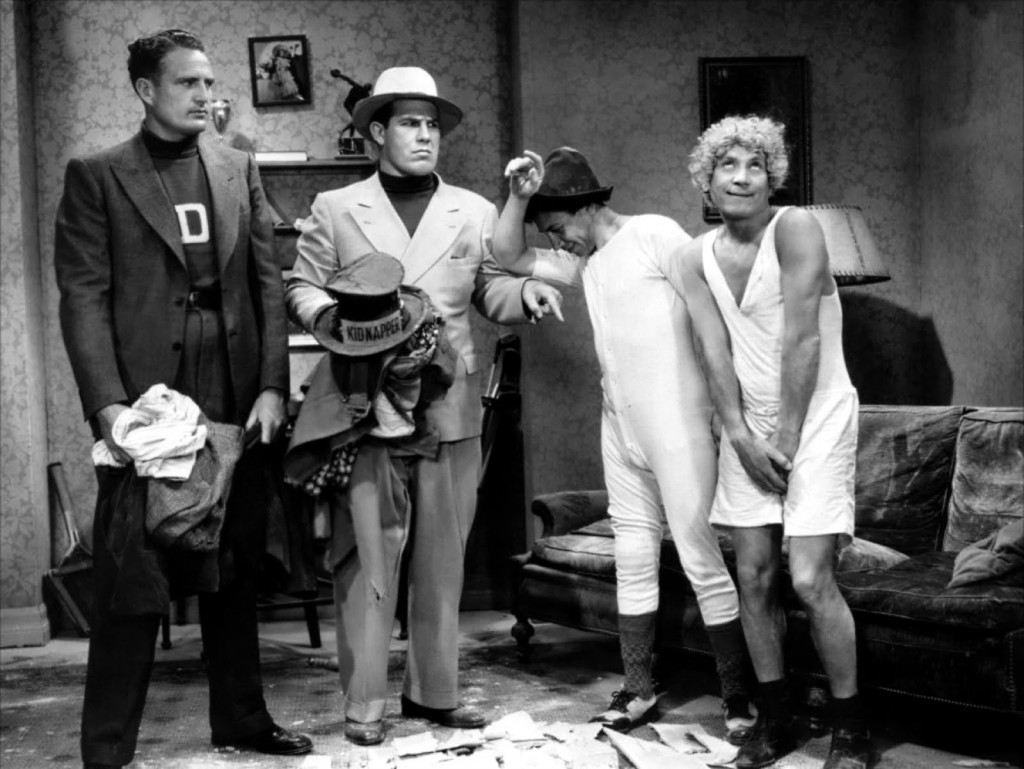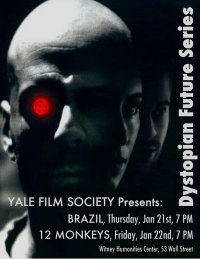
Zona: A Book About a Film About a Journey to a Room
by Geoff Dyer
Pantheon, 2012
240 pages
Last spring, an interviewer asked the British writer Geoff Dyer which movie he would choose to live inside. In retrospect that seems like a leading question; obviously Andrei Tarkovsky’s Stalker was the only possible answer.
Stalker is a long, slow, metaphysical Russian film from 1979. (“Andrei Tarkovsky” in Russian means “long, slow, metaphysical, film.”) It involves three men on a trip to a forbidden place, each for private personal reasons. Stalker is the name of the character who leads expeditions to this place -- a Room, inside a Zone -- where the deepest of desires are said to get fulfilled.
Today, what’s so special about the film, aside from it being a great cine-poet’s mesmerizing road movie of the Soviet twilight, is the fact that Geoff Dyer has written a book about it. Dyer is one of those rare geniuses who writes well about everything because he always winds up writing about himself. The navel into which he gazes is the world’s as well as his own. Thus is he, somehow, very possibly the only English-speaking person alive who can hold forth at length on Tarkovsky without boring the hell out of you.
Zona, the newest of Dyer’s nimble nonfiction category-busters, describes itself as “A Book About a Film About a Journey to a Room.” It is that, and also an essay on wish fulfillment, the management of time, and the variable likelihood of perception-expanding cinema, among other art forms, to exist in our distraction-addled lives.
“At first there can be a friction between our expectations of time and Tarkovsky time,” Dyer writes, “and this friction is increasing in the twenty-first century as we move further and further away from Tarkovsky time toward moron time in which nothing can last -- and no one can concentrate on anything -- longer than about two seconds. Soon people will not be able to watch films like Stalker or to read Henry James because they will not have the concentration to get from one interminable scene or sentence to the next. The time I might have been able to read late-period Henry James has passed, and because I have not read late-period Henry James I am in no position to say what harm has been done to my sensibility by not having done so. But I do know that if I had not seen Stalker in my early twenties my responsiveness to the world would have been radically diminished.”
In short, Zona is a characteristically digressive memoir of what this one movie has meant to this one man, which turns out to be a lot. (Meanwhile a whole alphabet of other art-house darlings -- Antonioni, Buñuel, the Coen brothers -- come in for parenthetical skewering.) Dyer’s carefully articulated stake in Stalker, one asymptotic quest to comprehend another, proves an invigorating counterforce, if not an antidote, to the very atrophy of attention he laments. The book is not long, but it is one in which several pages may pass with footnotes taking up more surface area than the body of the main text. Dyer sees it as “a catalogue or compendium of proposals for potentially interesting studies,” and he’s right about that, and nobody these days can get away with such a book in quite the way he can. Which is not to say it’s unprecedented. Writing in defense of writers, like himself, who offer commentary “without seeking to disguise the vagaries of their nature, their lapses of taste and the contingency of their own experiences,” Dyer speaks to and for the spirit of the original essayist, Montaigne.
And of course Dyer is to Zona as Tarkovsky is to Stalker: the contriver of a work through which he explores himself. Contriver, that is, as gainfully apart from originator; true, only Dyer could write this book, but not without Tarkovsky’s film, just as only Tarkovsky could make something “synonymous both with cinema’s claims to high art and a test of the viewer’s ability to appreciate it as such,” but not without Arkady and Boris Strugatsky’s novel Roadside Picnic to inspire him.
“Would we regard this landscape of fields, abandoned cars, tilted telegraph poles and trees as beautiful without Tarkovsky?” Dyer asks. “And could it have been brought into existence by any medium other than film?” There’s a beauty, too, in the asking, and a satisfaction from seeing that beauty brought into existence by this particular asker.
It helps that the intensity of his attention is not attenuating. Tarkovsky’s film is easy to recognize in Dyer’s prose, even for the reader who has never seen it. Here a character “has the knack of imbuing the simplest task with grudge,” there a color scheme exudes “a kind of submonochrome in which the spectrum has been so compressed that it might turn out to be a source of energy, like oil and almost as dark, but with a gold sheen too.” Everywhere, “the most distinctive feature of Tarkovsky’s art: the sense of beauty as force.” And the best way to grasp the movie’s essential slowness is simply to luxuriate in Dyer’s insanely companionable zeal.
In his nonfiction especially, Dyer’s education -- autodidact by way of Oxford -- seems useful; he seems to have seen and read everything, deeply. His habit is to refer unabashedly back to earlier gleanings. “John Updike reckoned that America was a vast conspiracy to make people happy,” Dyer writes, fortifying his own speculations about Soviet unhappiness. Or: “The light, which has been silvery and dank, glows gradually golden and warm, then fades, Turrell-ishly, to dank and silver again.” If you haven’t yet had a go at Stalker, you can look forward to recognizing that highly Tarkovsky-ish moment, here so Dyer-ishly described, the very instant you see it.
The Dyer Name Drop could be a cocktail. It is hard to get right. Even he occasionally flubs the proportions, making his own literacy seem merely like compulsive indexing. Mostly, though, it goes down very smoothly, giving pleasure and encouragement. Rather than torture his references into submission, he lives in them, inviting frequent reader visits. Writing on couture for Vogue, for example, Dyer has handy an observation John Cheever made about Persian carpets. That must be because he did that great piece on Cheever’s journals, the reader thinks, already feeling quite at home and a little tipsy.
Writing on Tarkovsky for the hell of it means bringing on a serious buzz: “Stalker is framed against a green so dark it is almost black -- what Conrad, with his irresistible urge to over-egg any and all puddings, would have called an impenetrable darkness. This darkness makes Stalker’s face and blue eyes burn more brightly as he speaks. With what? With the intensity of his belief, but also -- and it is this which distinguishes him from jihadists and born-again Christians -- with the intensity of his despair. The Zone is not simply a source of solace, the heart of Marx’s heartless world, it is a source of torment, a system of traps that constantly tests, teases and threatens not just his clients but Stalker himself.”
It’s tempting to keep quoting because here Dyer is only a few sentences away from bringing Werner Herzog into the huddle, but one must learn to pace oneself.
Historically, Stalker was a beleaguered beast, heavily rewritten, reshot, and at one point relocated to just downriver of a chemical plant whose toxicity may later have caused the filmmaker’s fatal cancer. Tarkovsky also had a heart attack during postproduction, and was prone, as Dyer gently puts it, to “megalomaniacal uncertainties.”
Aren’t we all? One of the real joys of reading Zona, thanks to its peculiar candor, is the privilege of picking up on how even Dyer’s most enthused engagement still can feel like fidgety misgiving. Another member of Tarkovsky’s trio is a washed-up writer seeking inspiration. “Maybe by going to the Zone he’ll be rejuvenated,” Dyer writes. “Man, I know how he feels. I could do with a piece of that action myself. I mean, do you think I would be spending my time summarizing the action of a film almost devoid of action -- not frame by frame, perhaps, but certainly take by take -- if I was capable of writing anything else? In my way I am going to the Room -- following these three to the Room -- to save myself.”
Dyer’s own stalkers surely will have noticed Stalker references piling up in his previous writings, and maybe they felt a whole book coming on. But then, who ever knows? He’s flighty. One of Dyer’s earlier books is called Yoga for People Who Can’t Be Bothered to Do It. Another, Out of Sheer Rage, is a biography of D.H. Lawrence by an author who couldn’t be bothered to do it. (Of course, in the end, he did. Sort of.) One essay in Dyer’s recent collection, Otherwise Known as the Human Condition, extemporized a proto-proposal for yet another book, Great Pastries of the World: A Personal View. Was that just a quip, or a promise?
 ARTS & IDEAS FEST: Metaphor for life? Existential act of faith? Amazing, perhaps foolhardy, display of skill and courage? Illegal act of art terrorism? Phillippe Petit’s tightrope act between the twin towers of the World Trade Center on August 4, 1974, might well be all these things and more. One thing for sure: it defined the idea of “working without a net.”
ARTS & IDEAS FEST: Metaphor for life? Existential act of faith? Amazing, perhaps foolhardy, display of skill and courage? Illegal act of art terrorism? Phillippe Petit’s tightrope act between the twin towers of the World Trade Center on August 4, 1974, might well be all these things and more. One thing for sure: it defined the idea of “working without a net.”


